Affiliate links on Android Authority may earn us a commission. Learn more.
Google Pixel Fold hands-on: A first-gen success?
Google doesn’t have the greatest track record when it comes to its first-gen products. Just look at the Pixel Watch: while a gorgeous timepiece, its poor battery life made it difficult to recommend. With that in mind, should we trust Google with its first foldable phone? Are consumers doomed to get a half-baked beta-level product with Google’s introductory stab at this type of device?
At Google I/O 2023, we had some hands-on time with that very phone, officially known as the Google Pixel Fold. Amidst all the excitement of tech journalists finally getting to use the fabled foldable, it was hard not to feel optimistic. Could this be a first-gen foldable success story for Google?
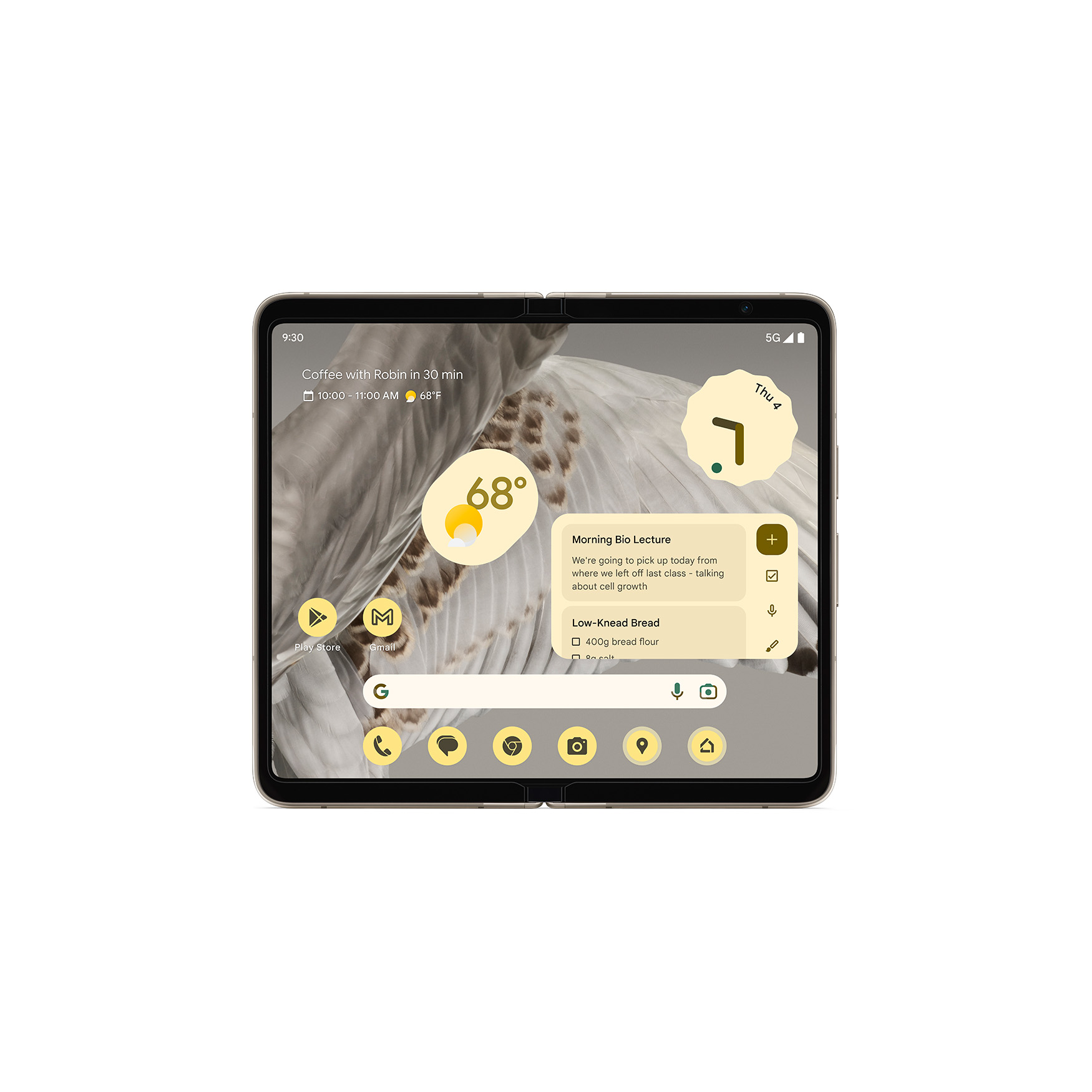

It’s definitely a Pixel
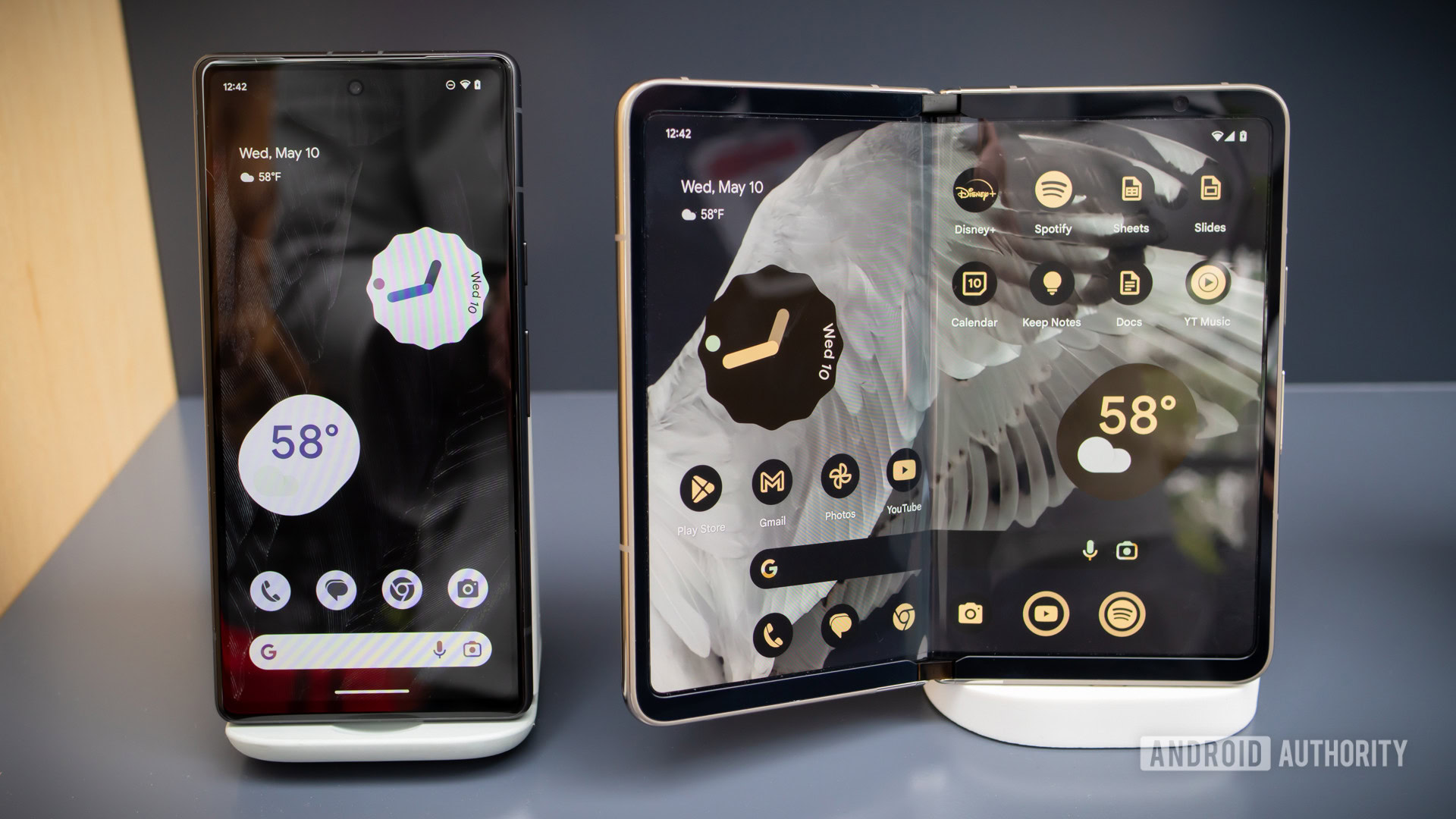
Before we get too deep into the nitty-gritty of the Fold, let’s get one thing perfectly clear: this is undoubtedly a Pixel. Over the years, Google has played around with the design language of its smartphones, adopting (and then dropping) elements so often that it got to the point that no one could distinctly identify what made Pixel hardware unique when compared to the best Android phones.
With the launch of the Google Pixel 6 series, that all changed. The Pixel 7 series carried over that new identity, cementing a new Pixel style that is unmistakable. I’m happy to report that the Pixel Fold fits right into that paradigm. As soon as I held the Pixel Fold in my hand, I was certain: this is a Pixel phone that fits in with the Pixel family.
A perfect example of what I mean here is the Fold’s camera bar. It is not the same as the bar you’ll find on the other Pixel 6 and Pixel 7 phones (nor even the Pixel 6a and just-launched Pixel 7a). However, it carries over enough of the identity of the camera bar we’ve all come to know, so it looks and feels immediately familiar.
It's actually quite the achievement that the Pixel Fold immediately feels like family amongst other Pixels.
This might seem like a small thing, but it’s actually very notable. The foldable phone industry is still pretty small, and it’s important that Google not only forge its own identity amongst the competition but tie in that identity with its existing portfolio. On that level, Google has hit it out of the park with the Pixel Fold.
Thin and wide
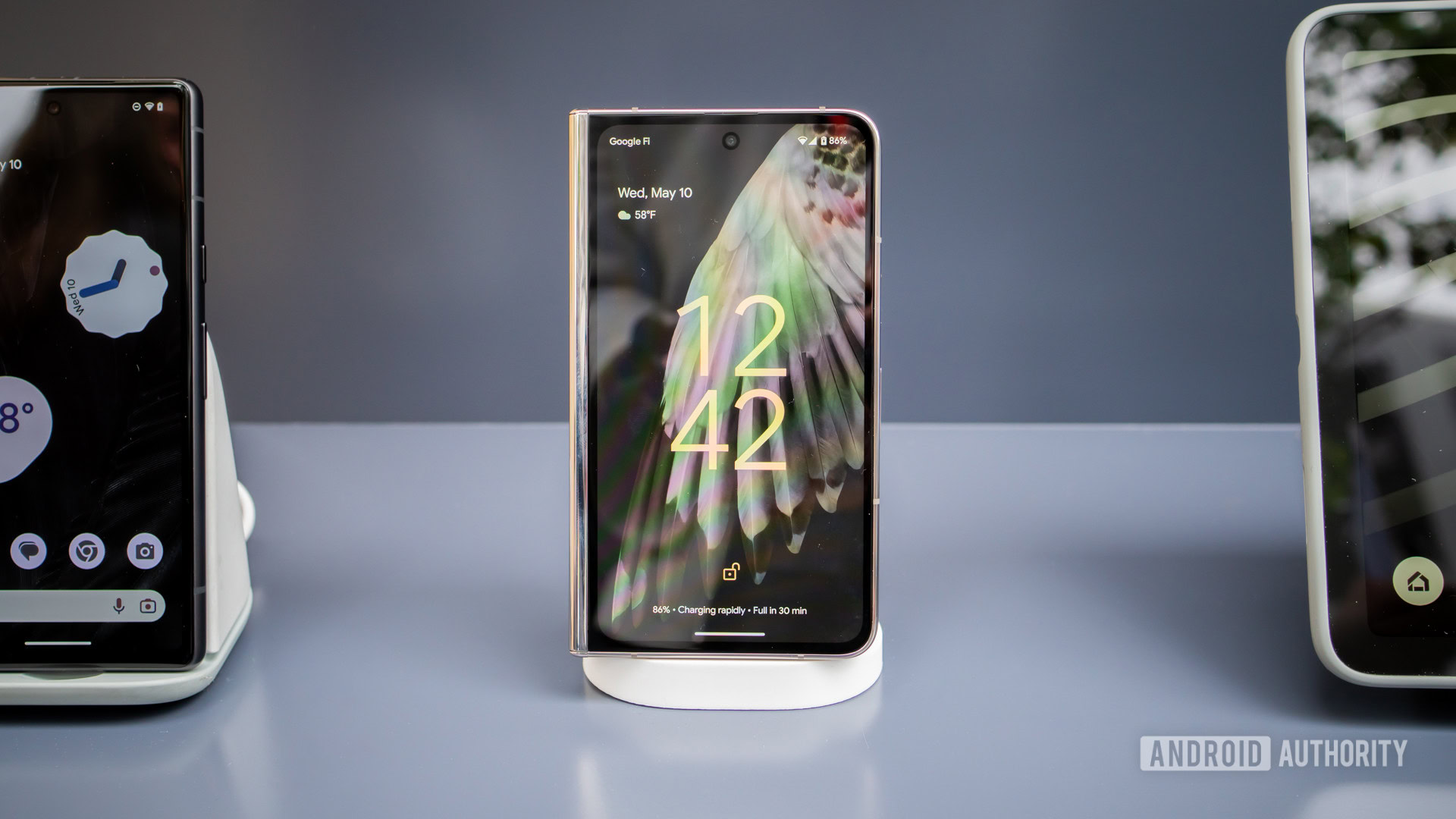
After I finished marveling at how nicely the Pixel Fold fits into the Pixel family, I couldn’t help but notice how thin it is. To be clear, it’s not thin when compared to a “normal” smartphone. The Pixel Fold, when folded, is 12.1mm thick — and that doesn’t include the camera bar. The Pixel 7 Pro, by comparison, is 8.9mm thick, so we’re dealing with a much thicker phone.
However, when you compare it to other foldables in the US market, the Google Pixel Fold feels positively svelte. A folded Samsung Galaxy Z Fold 4, for example, feels like a brick after holding the Pixel Fold (the Galaxy Z Fold 4 is 14.2mm thick without its camera bump when folded).
The Pixel Fold is now the thinnest 'true' foldable you can buy in the United States.
The thinness also really comes into play when you unfold the new Pixel. Unfolded, the Pixel Fold feels a lot like a Surface Duo. An unfolded Surface Duo 2 is still thinner than the Pixel Fold by about 0.3mm, but that’s hardly a significant amount, especially when you remember that a Surface Duo 2 isn’t a “true” foldable. Regardless, if the Galaxy Z Fold series feels too chunky for you, the Pixel Fold is now your best option.
The Pixel Fold is also substantially wider and shorter than its main competitor, the Galaxy Z Fold 4. This might come down to personal preference, but it was so much more comfortable to use a folded Pixel Fold than it ever has been using the Galaxy Z Fold 4. I understand that Samsung kept things slim to compensate for the thickness of the device, but our hands have become accustomed to phones being a certain width, and the Pixel Fold just fits better in the hand than anything I’ve used from Samsung.
A stable hinge, a smooth fold (and a crease)
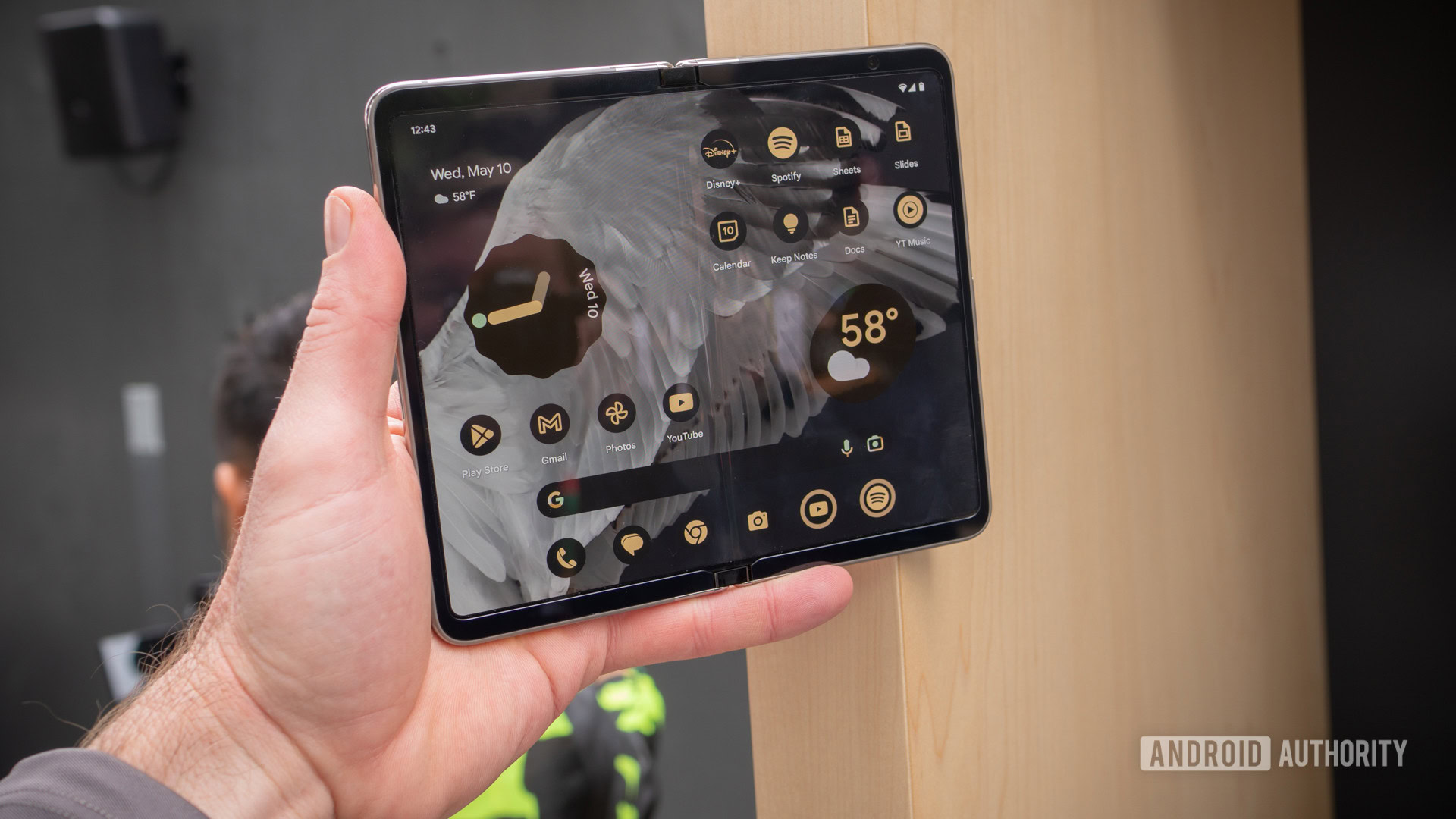
Samsung has had multiple generations of foldable phones to work out the kinks with its hinge tech. Since this is Google’s first go at this form factor, you might be concerned that the hinge wouldn’t be great. However, it appears Google simply waited for Samsung to make all the mistakes. The hinge on the Google Pixel Fold feels very sturdy, and it glides from one position to the next with ease.
Google claims that the hinge is good for 200,000 folds, which is the same number Samsung claims with its own hinges. That’s enough to comfortably unfold the device 273 times a day for five years straight. Of course, real-world stress on the hinge will be different from lab-tested stress, which is how Google likely got that 200,000 number.
The only real problem I had with the hinge was when the Pixel Fold was completely open. It didn’t have a satisfying “end” as I’ve experienced with Samsung foldables. It felt like the hinge kind of sputtered out and then just wouldn’t go any further. It’s difficult to explain, but I think Samsung’s hinge is still better, at least based on the limited time I had with the Pixel Fold.
Most readers here probably care less about the hinge than the crease. Well, if you had dreams of Google’s hinge design bringing the end of the internal display crease, I’m afraid I have some bad news. Not only is there a crease in the display, but it looked more apparent to me than what I’ve experienced with other foldables. You’ll need to decide for yourself whether or not this is a deal-breaker.
Software smarts, but nothing too unique…yet
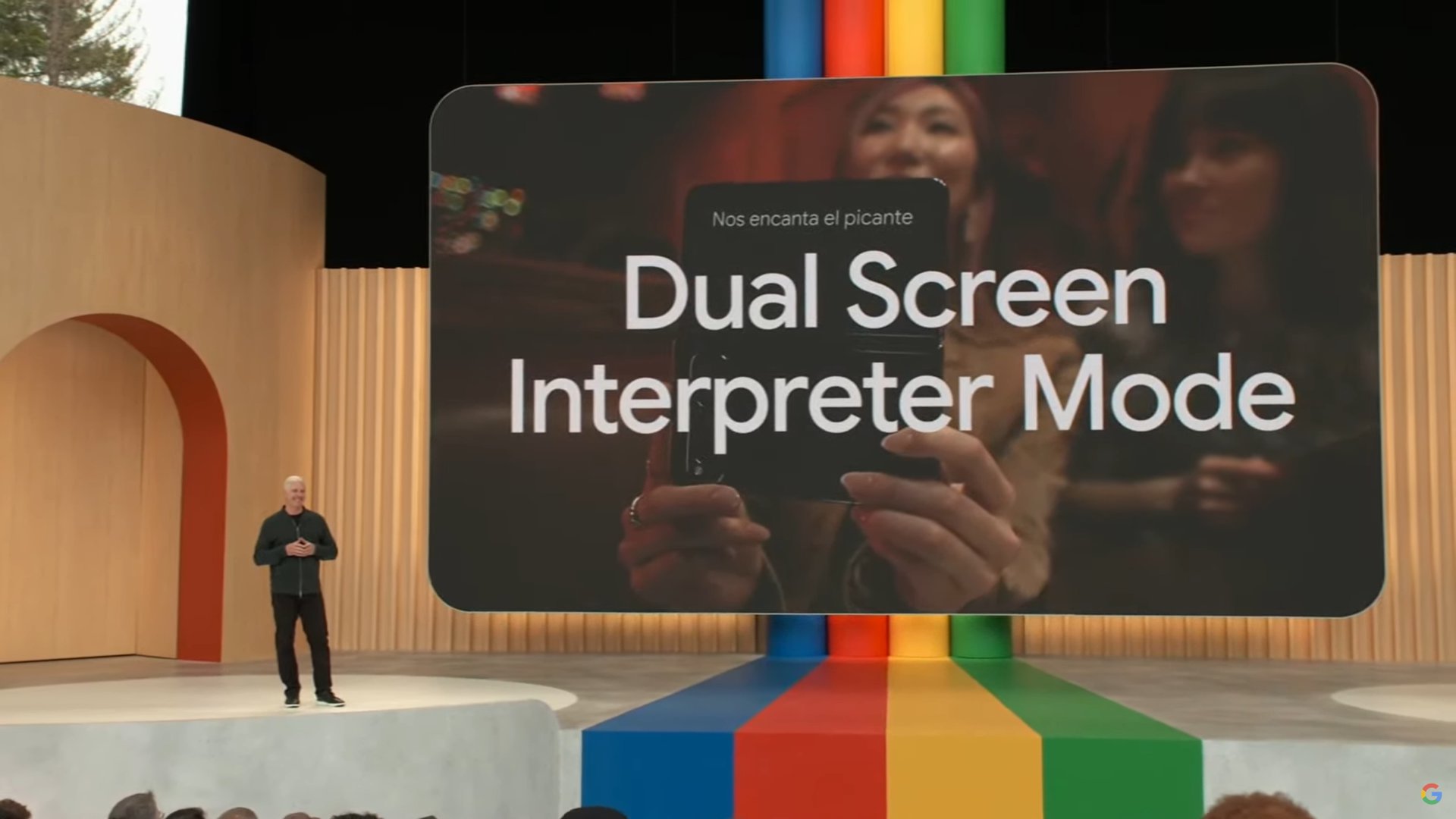
During my hands-on session with the Pixel Fold, a Google representative walked me through all the neat software tricks the device can do. There were some really cool ones, such as drag-and-drop productivity features, split-screen apps, YouTube videos that automatically change layouts based on the folded state of the device, and much more.
The only problem, of course, is that these are not Pixel Fold exclusives. Any foldable running Android 13 can do these things. Even Google’s silly announcement of how 50 of its own apps are optimized for the Pixel Fold is a bit of misdirection because most of those apps have had large screen support on all foldables since Android 12L.
Dual Screen Interpreter Mode could be the Pixel Fold's USP, but sadly we weren't able to test it.
There is one notable software feature that is exclusive to the Pixel Fold, which is called Dual Screen Interpreter Mode. This feature allows the Pixel Fold to act as a universal translator. First, you completely unfold the device and hold it so the inner display is facing you. Then, you talk to a companion in your native language. While you do that, the outer display — which the person you’re talking to can see — displays real-time text translation of everything you’re saying. Then, when you’re done talking, the Fold will translate your companion’s speech on the fly and display it on your screen.
This seems like an incredible feature, and we really wanted to try it out. However, Google was not allowing any demos of Dual Screen Interpreter Mode at I/O. So, for now, we can only hope that this feature works as Google says it does. We are looking forward to testing this out for real once the Pixel Fold is in for a full review.
Pixel Fold cameras: Looks good so far
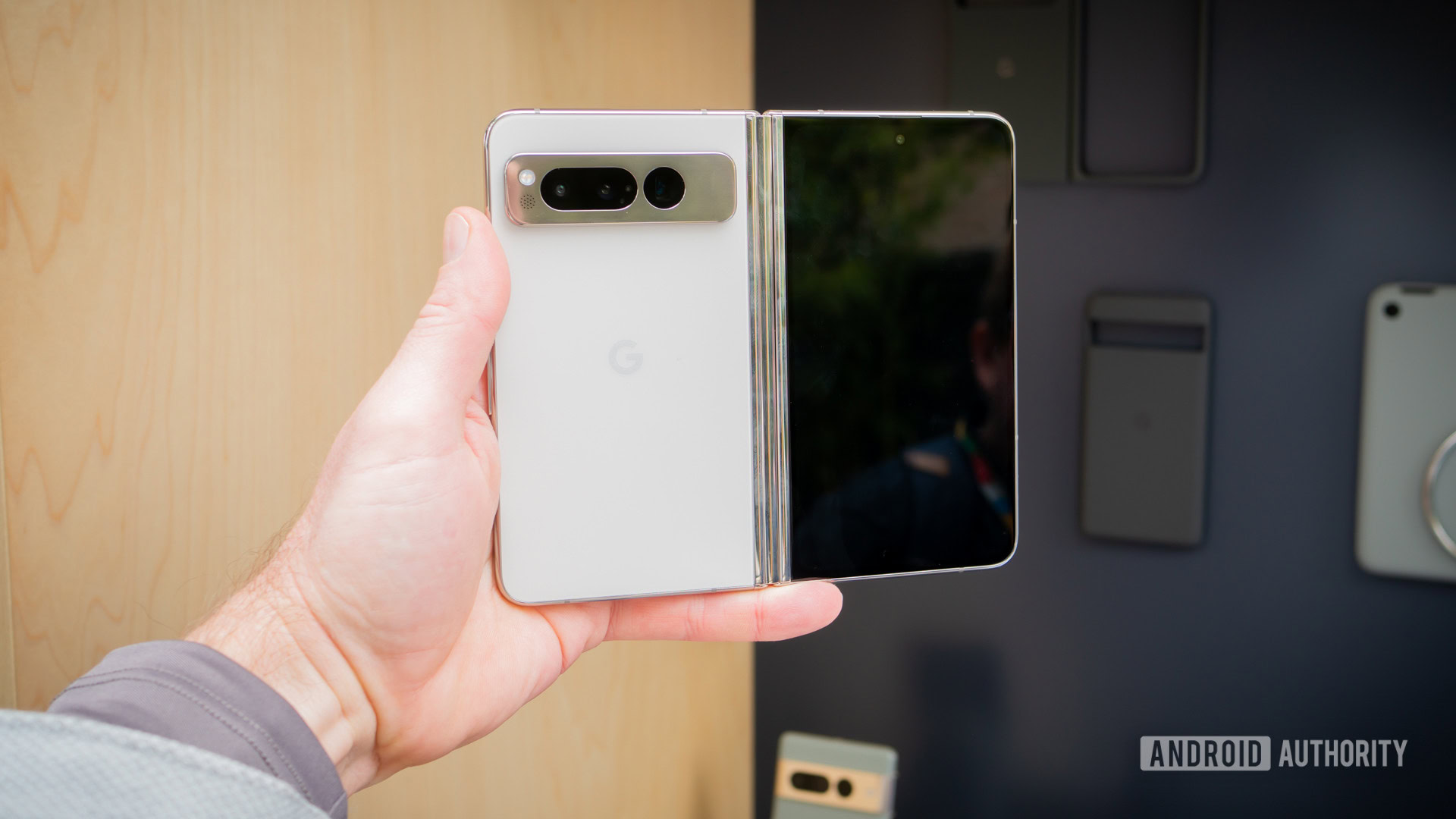
If the word “Pixel” is in a Google product, the camera is inevitably one of its star features. On stage at I/O, Google touted the Pixel Fold’s camera as being the best you can buy on a foldable (if you read the fine print, that statement only applies to markets in which the Pixel Fold will be available, which is the US, the UK, Germany, and Japan).
From a strict hardware perspective, we have high hopes for the Pixel Fold’s cameras. The 48MP primary shooter with a 1/2-inch sensor seems like it could be quite the powerhouse. That lens is paired with two 10.8MP cameras, with one being an ultrawide and the other being a telephoto capable of 5x optical zoom.
We are very excited about testing the Pixel Fold's cameras, but we weren't able to do that at I/O.
Meanwhile, there’s a 9.5MP wide lens on the outside for selfies and an 8MP wide inside for video calls. We wouldn’t suggest using the outer selfie camera, though, because you’re going to get much better shots using the Rear Camera Selfie feature. This allows you to unfold the phone and use the outer display as a viewfinder and the rear camera system as your shooter. This will get you much, much better selfies than any of the other cameras, so it’s worth the extra time it takes to unfold the phone before snapping away.
We didn’t have enough time with the Google Pixel Fold to do much camera testing. On paper, the Pixel Fold could go toe-to-toe with the Pixel 7 Pro, which is one of the best camera phones you can buy. Until we get some testing time with it, though, we can’t say anything for certain.
Read more: Google Pixel Fold vs Pixel 7 Pro camera comparison: Which is best?
Pixel Fold specs
| Google Pixel Fold | |
|---|---|
Display | Exterior: - 5.8-inch Dynamic AMOLED - 120Hz refresh rate - 2,092 x 1,080 - 408ppi - 17.4:9 aspect ratio - Gorilla Glass Victus cover - Up to 1,550 nits brightness - HDR support Interior: - 7.6-inch Dynamic AMOLED - 120Hz refresh rate - 2,208 x 1,840 - 380ppi - 6:5 aspect ratio - Ultra-thin glass cover with plastic protection - Up to 1,450 nits brightness - HDR support |
Processor | Tensor G2 Titan M2 security coprocessor |
RAM | 12GB LPDDR5 RAM |
Storage | US, UK, DE: 256GB or 512GB UFS 3.1 storage JP: 256GB UFS 3.1 storage No microSD card support |
Power | Minimum: 4,727mAh Typical: 4,821mAh 21W wired charging 7.5W wireless charging |
Cameras | Rear: - 48MP wide main sensor (ƒ/1.7, 1/2-inch sensor, 0.8μm, 82° FoV, OIS, CLAF) - 10.8MP ultrawide (ƒ/2.2, 1/3-inch sensor, 1.25μm, 121.1° FoV, Lens correction) - 10.8MP telephoto (ƒ/3.05, 1/3.1-inch sensor, 1.22μm, 21.9° FoV, 5x optical zoom) Front: - 9.5MP wide (ƒ/2.2, 1.22μm, 84° FoV, Fixed focus) Internal: - 8MP wide (ƒ/2.0, 1.12μm, 84° FoV, Fixed focus) |
Video | Rear: - 4K (30/60fps), 1080p (30/60fps) - 10-bit HDR Front: - 4K (30/60fps), 1080p (30/60fps) Internal: - 1080p (30fps) Formats: - HEVC (H.265) and AVC (H.264) |
Audio | Spatial audio support Stereo speakers Triple-microphone |
Software | Pixel UI Android 13 3 Android updates 5 years of security updates |
IP rating | IPX8 certification |
Biometrics | Power button fingerprint scanner Face unlock (out display) |
Ports | USB-C 3.2 Gen 2 Dual-SIM (Single nano-SIM + eSIM) |
Connectivity | All countries: Bluetooth 5.2 Ultra-Wideband chip NFC US, UK, and DE only: Wi-Fi 6E (802.11ax) with 2.4GHz + 5GHz + 6GHz JP only: Wi-Fi 6E (802.11ax) with 2.4GHz + 5GHz |
Bands | US, UK, and DE only: - GSM/EDGE: Quad-band (850, 900, 1800, 1900 MHz) - UMTS/HSPA+/HSDPA: Bands 1,2,4,5,6,8,19 - LTE: Bands B1/2/3/4/5/7/8/12/13/14/17/18/19/20/21/25/26/28/29/30/32/38/39/40/41/42/46/48/66/71 - 5G Sub6: Bands n1/2/3/5/7/8/12/14/20/25/28/30/38/40/41/48/66/71/75/76/77/78/79 - 5G mmWave: Bands n257/n258/n260/n261 JP only: - GSM/EDGE: Quad-band (850, 900, 1800, 1900 MHz) - UMTS/HSPA+/HSDPA: Bands 1,2,4,5,6,8,19 - LTE: Bands B1/2/3/4/5/7/8/12/13/14/17/18/19/20/21/25/26/28/29/30/32/38/39/40/41/42/46/48/66/71 - 5G Sub6: Bands n1/2/3/5/7/8/12/14/20/25/28/30/38/40/41/48/66/71/75/76/77/78/79 - 5G mmWave: Bands n257/n258/n260/n261 |
Dimensions | Folded: - 139.7 x 79.5 x 12.1mm Unfolded: - 139.7 x 158.7 x 5.8mm |
Weight | 283g |
Materials | Gorilla Glass Victus (external display) Ultra Thin Glass with protective plastic layer (Internal folding display) Hinge: Mirror-polished, multi-alloy steel construction Custom dual-axis Quad-cam synchronized mechanism Fluid friction across the full 180° range of motion |
Colors | Obsidian Porcelain Color availability varies by region and channel. |
In-box contents | USB-C to USB-C cable (USB 2.0, 1m) Quick Start Guide Quick Switch Adapter SIM tool |
Google Pixel Fold hands-on: Should you trust Google?

I spent quite a bit of time with the Google Pixel Fold, and I came away impressed. It felt great. It looked great. The spec sheet is impressive, the camera hardware seems like it could deliver some incredible results, and the Dual Screen Interpreter Mode sounds like something that could greatly assist me when I’m traveling.
As excited as I was, I couldn’t help but check myself. This is Google, after all, and buying a first-gen product from this company is almost never a good idea.
Ultimately, what dismayed me the most was the price. If Google delivered the Pixel Fold at a price that significantly undercuts the Galaxy Z Fold 4, it would be easier to recommend. But, as it stands, the Pixel Fold has the exact same MSRP as the Galaxy Z Fold 4, which is $1,799 for the model with 256GB of internal storage. That’s a lot of money, and anyone who’s been following Google’s hardware output over the past decade should give pause before shelling that over.
If Google announced this at $1,499, it would have put me more at ease. The Pixel Fold seems like a winner in a lot of ways, and a very competitive pricing strategy would have sealed the deal. At $1,799, though, this phone had better have no significant issues when we put it through our full review process. I’m rooting for you, Google, but I’d still recommend buyers take a “wait and see” approach.
If you’re ready to go out on a limb, the Pixel Fold is available for pre-order now.

